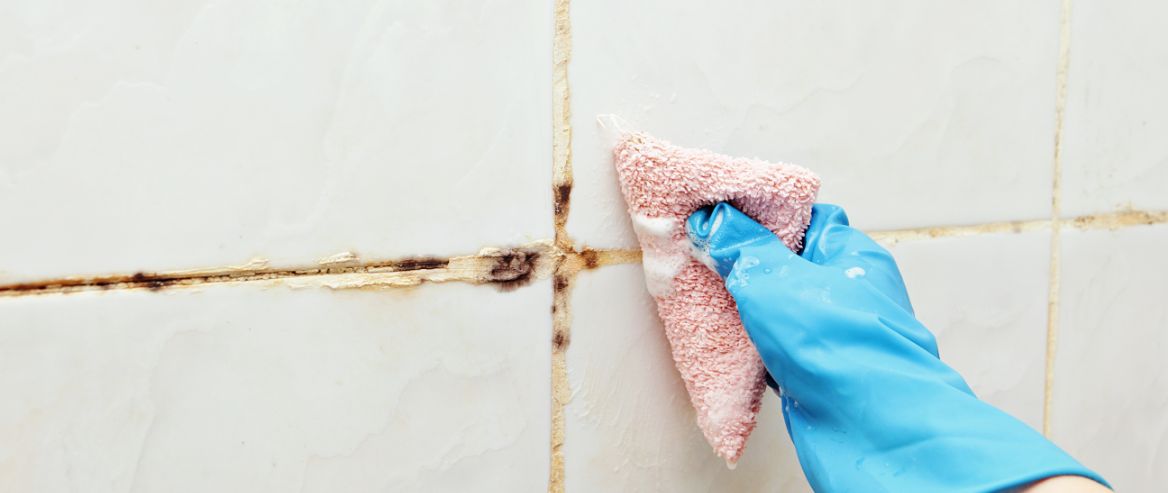Why is Mould so Bad for You
Published on Jul 20, 2022 | Updated - Mar 1, 2023

This year has been a bad one for mould, due to the high rainfall many parts of the country have experienced.
It looks ugly and can damage your home, but it has detrimental effects on your health, too.
So why is mould bad for you?
Let’s find out.
Mould Facts and How it Affects Your Health

What is Mould?
The first step is understanding what you’re dealing with.
Mould is a stubborn fungus that lives on either plant or animal matter, including materials such as wood, plasterboard and furnishings.
Mould reproduces in damp and poorly ventilated areas, also producing spores. When mould lands on a damp area inside, it is more likely to spread.
For mould to thrive, it needs both moisture and an environment where the relative humidity is regularly above 60% - that’s why mould is so common in bathrooms.
If you have mould in your home, then it is likely to be contributing to respiratory problems, infections, asthma and allergies.
Why is mould bad for you?

As it grows, mould releases microscopic spores into the air, which can then be inhaled by you and your family. These spores sit in our respiratory tract and lungs and may prompt all types of reactions.
As previously mentioned, contaminations are fairly prominent in your bathroom, but they can grow in other areas of your home. Unfortunately, this may mean that even while you sleep, you’re inhaling these spores in.
What are common reactions to mould?

Why is mould bad for you? There are several reasons.
These spores can trigger allergic or histamine reactions, potentially resulting in a runny nose, breathing issues, sore eyes, lethargy, and if you're asthmatic, asthma attacks.
The Victorian Health Department has provided some great advice on people who may be prone to more severe health repercussions including those with:
-
Weakened immune systems
-
Allergies
-
Severe asthma
-
Chronic, obstructive, or allergic lung diseases.
We recommend liaising with your healthcare professional if you have any of the above conditions and are worried that mould may be affecting your health.
Other studies, including those cited by Asthma Australia have also shown that children who are continually exposed to mould are more likely to develop asthma.
Mould has a cumulative effect, meaning that even exposure to a small amount is unlikely to affect most people. Prolonged exposure can increase the possibility of many adverse health outcomes.

RECOMMENDED READING
The Ultimate Guide to Preventing and Removing Mould in Your HomeWhat should you do when you have mould?

Discovering mould is never pleasant. The below method offers a treatment for handling smaller mould infestations in your home, but you must remember this.
Mould will continue to return if you don’t rectify the reason for the mould – that is, the moisture source.
There are many things that cause mould, but the most common include things such as leaking pipes, rising dampness in basements, or rain seeping in because of damage to the roof or window frames. A building inspector or plumber can help you identify and fix the issue.
Here is what we recommend for smaller mould infestations in your home:
- Mix a 1:1 mix of white vinegar and water in a spray bottle, generously spray the mould onto the mould, soak for 20 minutes, rinse and wipe down thoroughly. We recommend this process be repeated the following day for effective mould treatment.
- Sugar soap is great for treating any remaining marks.
- This works so well because vinegar has antifungal and antibacterial properties that treat almost all types of mould. Best of all, it’s better for the environment, your family and a cost-effective option.
- Don’t use vinegar frequently on natural materials like marble, as its acidity can etch the surface.
On another note, despite what you’ve been told, don’t use bleach to treat mould. Our article on why you shouldn’t treat mould with bleach explores this topic further, but the primary reason we’re against this solution is that bleach takes the colour out of the mould and not much else.
You need a solution that’s actually going to treat the problem, not just bleach the mould’s colour.
How can you prevent mould?

Prevention is definitely better than cure, and this is especially true when it comes to the treatment of mould. Our recommendation is to remove or minimise how much moisture is in your home.
These are a few things you can do:
-
A leak may be the reason behind a concentrated section of the mould. You’ll need to get in touch with a builder to discuss and rectify this issue.
-
Improve ventilation in your bathroom by opening windows frequently and turning on your exhaust fans while having your shower, cooking or using the dryer in your laundry. Leave the fan on for at least 10 minutes after you leave the room for it to remove as much condensation as possible.
-
A small desiccant dehumidifier like Damp-Rid can be a useful tool but you can also invest in a larger dehumidifier if your home is susceptible to mould or if you want to take preventative measures.
How does a professional get rid of mould?

If your mould issues are severe or continue to return, then we highly recommend calling in a professional.
Electrodry Mould Cleaning effectively treats mould and its spores. Your technician has undergone extensive training and can offer practical, cost-effective recommendations to prevent mould from recurring.
Call our team on 13 27 13 to find out more.